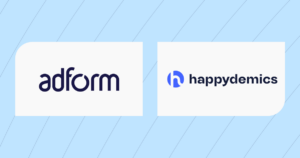By Sinan Erhan, Head of UK and Partner at OMMAX
Programmatic advertising has forever changed the way that brands go about digital marketing. Gone are the days when advertisers would have to manually negotiate ad sizes, placements and durations; memories belonging to a bygone era now that real-time bidding can achieve the ideal results in less than a second.
Programmatic now enables marketers to create highly targeted and customisable campaigns. By leveraging real-time and contextual data, brands can automatically adjust ad placement and content, analyse performance, and action feedback on a granular level. With AI technology promising huge acceleration, we should get set for another adtech revolution.
The development of AI tools in advertising
Generative AI is set to dominate the consumer marketing landscape due to the potential to create hyper-personalised, customer-specific campaigns, furthering the power of programmatic. There are already several available tools that bolster campaigns with personalised content creation, such as Blend, the GenAI-powered solution from Typeface which can be taught brand guidelines to automatically generate visual assets and their variations, as well as repurpose existing content. Tools such as Utiliz AI can even automatically localise content to suit different regions.
Combine that capability with programmatic advertising, which already tailors campaign elements to individual users based on real-time data, and you have hyper-personalisation: the ability to create completely bespoke advertising campaigns per user, automatically determined in the milliseconds spent in loading a webpage.
How GenAI creates dynamic and targeted campaigns
With GenAI, a plethora of ad creative can be generated in seconds for the same ad spot. Programmatic models can then choose the most appropriate creative based on contextual and historical data, while factoring in immediate details such as time, place and customer profile. AI can then be further used to deliver insights that enable marketers to optimise campaign back-ends in terms of domain, supply vendor and more, to create meticulously targeted campaigns that boost KPIs such as click-through rates and conversion rates. Letting your audiences feel seen and valued is a surefire method to enhance the customer experience.
GenAI can facilitate quick and easy localisation to achieve global reach at a fraction of the time and cost that traditional methods require. With its capacity for the processing and generation of natural language, GenAI can translate copy while recognising important linguistic differences between regions and cultures, reducing the need for expensive localisation services (who might not recognise these important differences themselves).
Beyond content, GenAI can also provide precisely targeted audience segments based on natural language prompts taken from truly global data. AI-assisted audience building tool Marve, was developed for this exact purpose. Such tools have the potential to hugely increase productivity.
How to maintain ad quality with GenAI
If programmatic advertising platforms are to adopt GenAI in earnest, then we can expect human teams to spend a lot less time on the particulars of the campaigns they run. While this will improve ROI and free marketing teams to focus on closing leads, brands should remember how vital human oversight is.
Don’t be mistaken in thinking that consumers will blindly embrace AI-generated content. Campaigns need to be led as part of clearly articulated strategies to make them worth the effort, whilst any customers exposed to AI-assisted creative that is inadvertently misleading or unprofessional will see their loyalty and satisfaction nosedive. In a programmatic context, where executive decisions are made via machine learning and AI, marketing teams may not always have the chance to approve creative before it is shown to key demographics.
Consumers are in two minds on how they feel about GenAI content. While many prefer AI-generated images and text in theory, in advertising it can lead to sentiments of distrust and fears of false advertising, diminishing the effectiveness of your campaign. A recent study has shown that flagging content as AI-generated increases consumer trust in the same content by up to a staggering 96% – it’s a matter of trust and transparency.
Ultimately, it’s the responsibility of every brand to prove that AI is a tool that can be used responsibly and effectively. If ad creative is to be generated and published immediately via a programmatic platform – that is to say, without approval from a human agent – you run the risk of inviting scandal, whether platforming ads that are misleading or that contradict your core values, ultimately impacting trust in AI-generated content and therefore your brand.
The best way you can achieve this is by first ensuring your AI tools are properly trained to minimise bias and ensure that ad creative is compliant with brand guidelines. When done correctly, your programmatic activities can be effective whether executive decisions are made by human agents or AI; as long as the human input is there, you can ensure that your advertising efforts are effective and consistent.
With that being said, oversight is of the utmost importance, and should be a factor in your marketing strategy – a tall order for marketing teams, especially across multiple campaigns. This issue can be remedied with automated quality checks, which streamline the overseeing process by providing an overview of potential issues
Emerging AI tools have already begun to disrupt standard programmatic workflows. With responsible use and an eye on incoming regulations, brands will soon be able to fully amplify their advertising activities from end to end.












